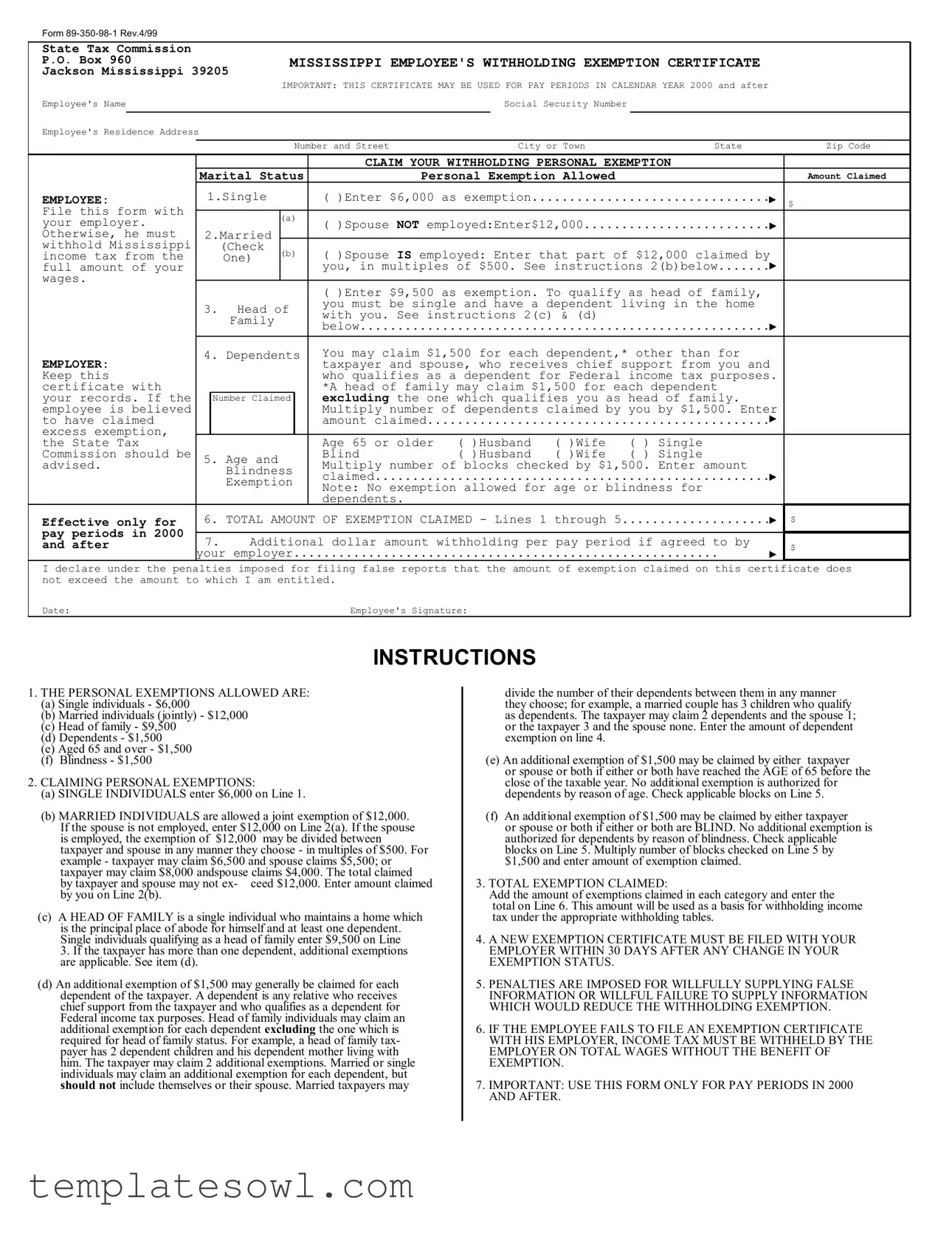What is the purpose of the 89 350 98 1 form?
The 89 350 98 1 form, also known as the Employee's Withholding Exemption Certificate, is used by employees in Mississippi to claim personal exemptions for state income tax withholding purposes. This form helps employees inform their employers about how much state tax to withhold from their paychecks based on their marital status and the number of dependents they have.
Who should complete the 89 350 98 1 form?
Any employee working in Mississippi who wishes to claim a personal withholding exemption should complete this form. This includes single individuals, married individuals, heads of households, and those with dependents. It must be submitted to the employer for processing.
What information is required to complete the form?
The form requires the employee's name, Social Security number, residence address, and marital status. Additionally, employees must declare the amount of personal exemptions they are claiming, such as those for themselves, their spouse, dependents, and any additional exemptions for age or blindness.
What are the personal exemption amounts allowed on the form?
Employees may claim the following personal exemptions: $6,000 for single individuals, $12,000 for married couples, and $9,500 for heads of household. Each dependent qualifies for an additional $1,500 exemption. Employees aged 65 or older or those who are blind may also claim an additional $1,500 exemption.
How does a married couple claim their exemptions?
Married couples are allowed a joint exemption of $12,000. If both spouses work, they may divide this amount between themselves in multiples of $500. For instance, one spouse may claim $7,000 while the other claims $5,000, as long as the total does not exceed $12,000.
What happens if an employee does not file this form?
If an employee fails to submit the 89 350 98 1 form to their employer, income tax must be withheld from their total wages without considering any exemptions. This could result in a higher tax withholding than the employee might be entitled to claim.
When should an employee update their exemption certificate?
Employees must file a new exemption certificate with their employer within 30 days of any change in their exemption status. Changes could include a change in marital status, the birth of a child, or any other circumstance affecting the number of claimed exemptions.
What should an employee do if they believe they have claimed too many exemptions?
If an employee suspects they have claimed an excessive number of exemptions, they should consult their employer or a tax professional. It may be necessary to file a revised form to avoid penalties for incorrect reporting.
What are the penalties for providing false information on the form?
Penalties may be imposed for willfully providing false information or failing to report information that would reduce the withholding exemption. Such actions can lead to fines or other legal consequences, so accuracy is crucial when completing the form.
Is the 89 350 98 1 form valid for any tax year?
No, the 89 350 98 1 form is only valid for pay periods in the calendar year 2000 and onwards. Employees must ensure they are using the correct version of the form for the applicable tax year to ensure compliance with state laws.

